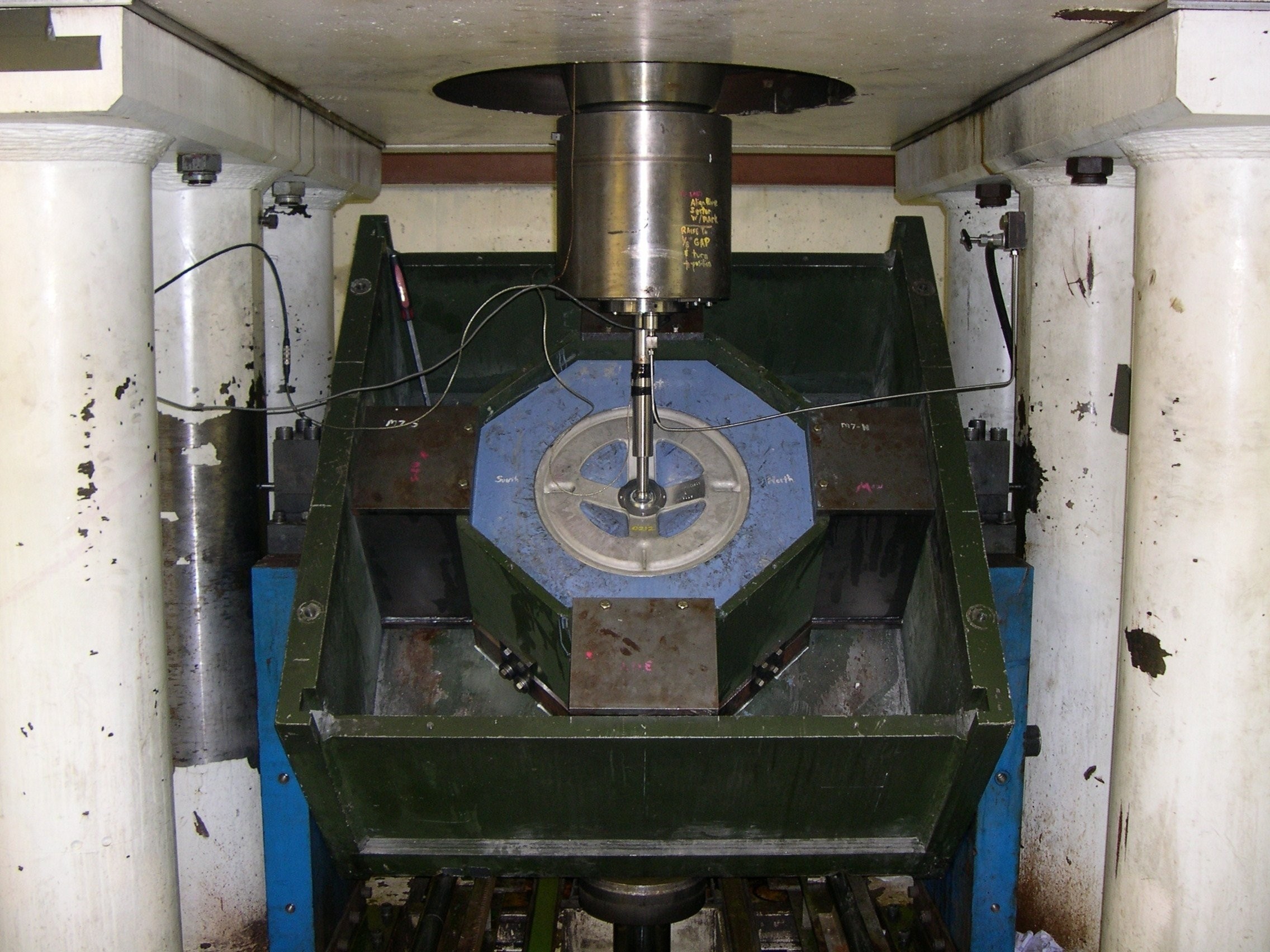WATERVLIET ARSENAL (Oct. 9, 2008) - What started off as a serious logistical challenge at the U.S. Army Watervliet Arsenal one year ago, has turned into a $2 million windfall for the Department of Defense.
The Arsenal, which manufactures components for tank, artillery, and mortar systems for the U.S. military, experienced a significant rise in orders for mortar components last year. Normally this is good news to the Arsenal, and it was, but the increase in orders created a serious workflow challenge for the production managers.
According to Jake Peart, Arsenal program manager for mortar systems, "Due to the Army's 'Reset' program, the Arsenal received several large orders for mortar baseplates last year." The Army's Reset program is defined as a set of actions to restore equipment to a desired level of combat capability. In essence, units in combat, or units that have returned from combat, have an immediate need to repair and maintain their combat equipment.
What made supporting these orders difficult had nothing to do with ratcheting up the machinery at the Arsenal for higher production. It dealt more with the significant time lag that occurred when the Arsenal had to send the baseplates to another military installation for quality testing, said Peart.
"We would manufacture the baseplates and send them to a test site where it may take months to get our plates tested and shipped to the customer," Peart said. The delay was unacceptable to the mortar program manager because of the urgent requirements to get these mortar components quickly to the warfighters, added Peart.
So, Peart put a team together to analyze the entire mortar production process. Key members of the team were representatives from BenAfAt Laboratories.
Although BenAfAt is located on the Arsenal, it falls under the command of Army Armaments Research, Development and Engineering Center (ARDEC). Their research and design capability is often leveraged by the Arsenal to improve production methods and products.
Peart said that when the team looked at the entire mortar manufacturing process, the team determined that one component of the production cycle, baseplate testing, had the potential to yield significant time savings by tapping into BenAfAt's experience in simulation modeling.
According to Joe Sibilia, BenAfAt's mortar project engineer, mortar baseplate samples were traditionally subjected to out of state, live-fire testing. This meant the Arsenal had to package large numbers of baseplates and ship them to a test site, which would then put the baseplates on a mortar system and fire live rounds from them.
There were several reasons why this process had room for improvement, said Sibilia. "One, the test site is not collocated at the production site (Watervliet Arsenal), which meant the Arsenal did not control the priority of work during testing. Second, bad weather at the test site sometimes effected the response time. Finally, mortar rounds are expensive," Sibilia said.
"So, it became clear that if we could test the baseplates at the Arsenal, we then could dramatically reduce production time and maybe save money for the government," Sibilia stated.
Sibilia turned to his BenAfAt counterpart, Dr. Andrew Littlefield, who is an expert in simulation testing for such things as the Army's Future Combat System.
Littlefield, who has a Ph.D. from RPI in mechanical engineering, said that BenAfAt had originally tested experimental mortar baseplates in the 1980s. But, that he had not conducted similar tests in the eight years he has been at BenAfAt.
"But by using today's simulation capability at the Arsenal, we can simulate the live firing of rounds by using hydraulic pile hammers," Littlefield said.
"The costs for simulated testing at BenAfAt range from $680 to $900 per plate. On average, we are currently saving more than $1000 per baseplate when compared to costs related to shipping and testing at an alternate test site," Littlefield added.
Peart said that being the premier manufacturer of tank, howitzer, and mortar systems doesn't make the Arsenal feel comfortable and certainly not complacent with that tagline.
"Being good is not good enough," said Peart. We must continuously review our production methods to find ways to become more efficient and effective, added Peart.
"Who would have thought that by looking at just one aspect of the mortar production line that we would be able to expedite delivery of critical weapons components by months to the warfighters, while at the same time saving the Department of Defense millions of dollars," Peart said.
According to Peart, there will be long-term savings to the Department of Defense as orders for mortar components continue to come to the Arsenal in significant numbers.


Social Sharing